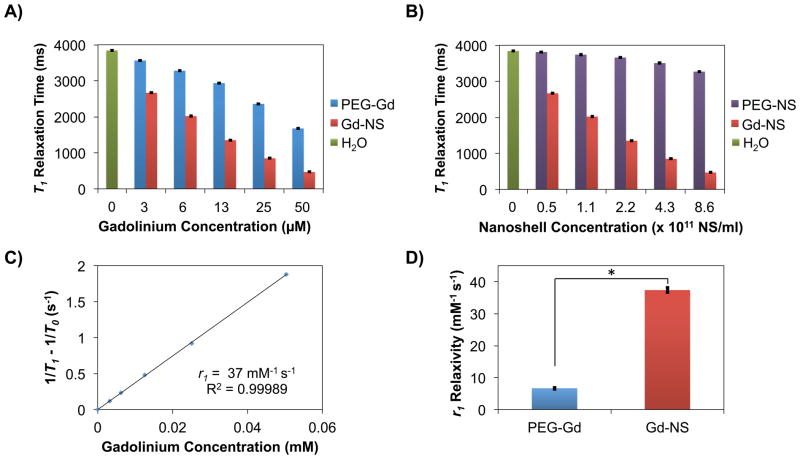Figure 2.
Benchtop relaxometry (1.41 T, 37 °C) showed gadolinium-nanoshells (Gd-NS) decreased T1 relaxation times compared to controls and exhibited high r1 relaxivity. Gd-NS showed lower T1 relaxation times as compared to (A) OPSS-PEG-Gd(DOTA) (PEG-Gd) at equivalent gadolinium concentrations, (B) PEG-nanoshells (PEG-NS) at equivalent nanoshell concentrations, and (A and B) water as a control. All groups are significantly different from one another in (A) and (B) by ANOVA and post-hoc Tukey HSD (p < 0.05, n = 6). Error bars indicate standard deviation. (C) Decreases in T1 relaxation times for Gd-NS translated to a high r1relaxivity value (37 mM−1 s−1), ~9 times greater than that of clinical Gd(DOTA) agents (~4 mM−1 s−1), and (D) ~5 times greater than that of PEG-Gd (7 mM−1 s−1). *p < 0.05 by Student’s t-test, n = 5. Error bars represent standard deviation.

